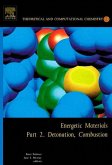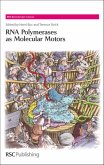Tutorials in Molecular Reaction Dynamics
Rsc
Herausgeber: Brouard, Mark; Vallance, Claire
Tutorials in Molecular Reaction Dynamics
Rsc
Herausgeber: Brouard, Mark; Vallance, Claire
- Broschiertes Buch
- Merkliste
- Auf die Merkliste
- Bewerten Bewerten
- Teilen
- Produkt teilen
- Produkterinnerung
- Produkterinnerung
Written by internationally recognised researchers this easy to use textbook on molecular reaction dynamics has the young scientist in mind.
Andere Kunden interessierten sich auch für
![Structural Dynamics with X-Ray and Electron Scattering Structural Dynamics with X-Ray and Electron Scattering]() Structural Dynamics with X-Ray and Electron Scattering244,99 €
Structural Dynamics with X-Ray and Electron Scattering244,99 €![Aggregation Induced Emission Aggregation Induced Emission]() Aggregation Induced Emission212,99 €
Aggregation Induced Emission212,99 €![Theoretical Chemistry for Electronic Excited States Theoretical Chemistry for Electronic Excited States]() Michael A Robb (UK Imperial College London)Theoretical Chemistry for Electronic Excited States187,99 €
Michael A Robb (UK Imperial College London)Theoretical Chemistry for Electronic Excited States187,99 €![Theories of Molecular Reaction Dynamics Theories of Molecular Reaction Dynamics]() Niels E. Henriksen (Technical University D Department of ChemistryTheories of Molecular Reaction Dynamics99,99 €
Niels E. Henriksen (Technical University D Department of ChemistryTheories of Molecular Reaction Dynamics99,99 €![In Silico Medicinal Chemistry In Silico Medicinal Chemistry]() Nathan BrownIn Silico Medicinal Chemistry213,99 €
Nathan BrownIn Silico Medicinal Chemistry213,99 €![Energetic Materials Energetic Materials]() P.A. Politzer / JS Murray (eds.)Energetic Materials177,99 €
P.A. Politzer / JS Murray (eds.)Energetic Materials177,99 €![RNA Polymerases as Molecular Motors RNA Polymerases as Molecular Motors]() RNA Polymerases as Molecular Motors181,99 €
RNA Polymerases as Molecular Motors181,99 €-
-
-
Written by internationally recognised researchers this easy to use textbook on molecular reaction dynamics has the young scientist in mind.
Produktdetails
- Produktdetails
- Verlag: Royal Society of Chemistry
- Seitenzahl: 508
- Erscheinungstermin: 2. Dezember 2011
- Englisch
- Abmessung: 244mm x 187mm x 27mm
- Gewicht: 972g
- ISBN-13: 9781849735308
- ISBN-10: 1849735301
- Artikelnr.: 35758321
- Herstellerkennzeichnung
- Libri GmbH
- Europaallee 1
- 36244 Bad Hersfeld
- gpsr@libri.de
- Verlag: Royal Society of Chemistry
- Seitenzahl: 508
- Erscheinungstermin: 2. Dezember 2011
- Englisch
- Abmessung: 244mm x 187mm x 27mm
- Gewicht: 972g
- ISBN-13: 9781849735308
- ISBN-10: 1849735301
- Artikelnr.: 35758321
- Herstellerkennzeichnung
- Libri GmbH
- Europaallee 1
- 36244 Bad Hersfeld
- gpsr@libri.de
Mark Brouard is a Professor of Chemistry at the University of Oxford. He has 20 years experience of research in the field, with around 90 publications, including a textbook on Reaction Dynamics, to his name. His research involves studying the mechanisms of elementary chemical processes in the gas phase, with a view to understanding these processes at a fundamental level. He has been invited to speak on this subject at numerous international conferences. Claire Vallance is based in the Department of Chemistry at the University of Oxford. She has more than ten years research experience in molecular reactions dynamics and has authored around 40 refereed publications in the area. Her current research interests focus on the dynamics of biomolecular reactions; angular momentum alignment and orientation in the products of molecular photodissociation; cavity ringdown techniques; whispering gallery modes in dielectric microspheres and optical fibres for chemical applications and supercontinuum light sources for spectroscopy.
Introduction
Potential energy surfaces: the forces of chemistry
Scattering theory: predicting the outcome of chemical events
Processes involving multiple potential energy surfaces
Inelastic scattering: energy transfer in collisions
Reactive scattering: reactions in three dimensions
Reactive scattering: quantum state-resolved chemistry
Photodissociation dynamics: the fragmentation of molecules by light
Stereodynamics: the role of orientation and alignment in chemistry
Surface scattering: molecular collisions at interfaces
Femtochemistry and the control of chemical reactivity
Cold collisions: chemistry at ultra low temperatures
Study boxes
Potential energy surfaces: the forces of chemistry
Scattering theory: predicting the outcome of chemical events
Processes involving multiple potential energy surfaces
Inelastic scattering: energy transfer in collisions
Reactive scattering: reactions in three dimensions
Reactive scattering: quantum state-resolved chemistry
Photodissociation dynamics: the fragmentation of molecules by light
Stereodynamics: the role of orientation and alignment in chemistry
Surface scattering: molecular collisions at interfaces
Femtochemistry and the control of chemical reactivity
Cold collisions: chemistry at ultra low temperatures
Study boxes
Introduction
Potential energy surfaces: the forces of chemistry
Scattering theory: predicting the outcome of chemical events
Processes involving multiple potential energy surfaces
Inelastic scattering: energy transfer in collisions
Reactive scattering: reactions in three dimensions
Reactive scattering: quantum state-resolved chemistry
Photodissociation dynamics: the fragmentation of molecules by light
Stereodynamics: the role of orientation and alignment in chemistry
Surface scattering: molecular collisions at interfaces
Femtochemistry and the control of chemical reactivity
Cold collisions: chemistry at ultra low temperatures
Study boxes
Potential energy surfaces: the forces of chemistry
Scattering theory: predicting the outcome of chemical events
Processes involving multiple potential energy surfaces
Inelastic scattering: energy transfer in collisions
Reactive scattering: reactions in three dimensions
Reactive scattering: quantum state-resolved chemistry
Photodissociation dynamics: the fragmentation of molecules by light
Stereodynamics: the role of orientation and alignment in chemistry
Surface scattering: molecular collisions at interfaces
Femtochemistry and the control of chemical reactivity
Cold collisions: chemistry at ultra low temperatures
Study boxes








